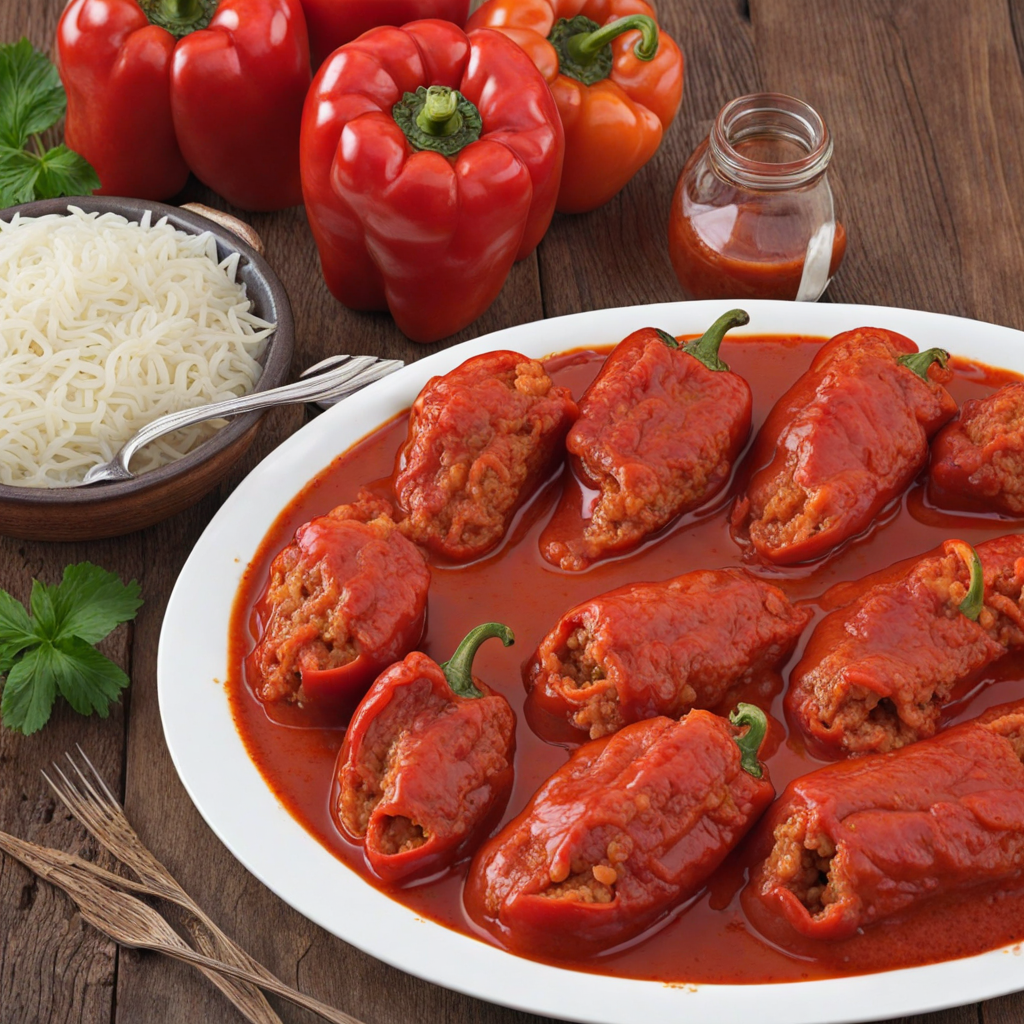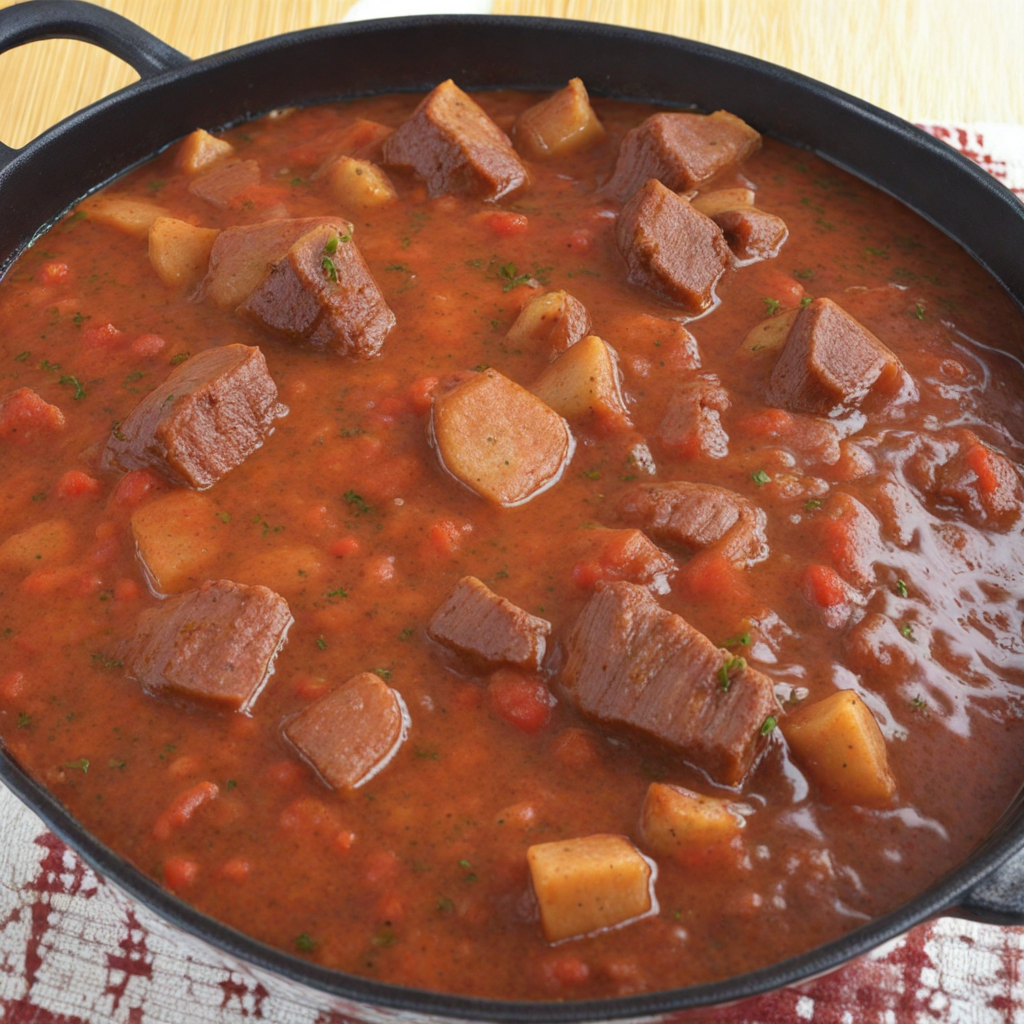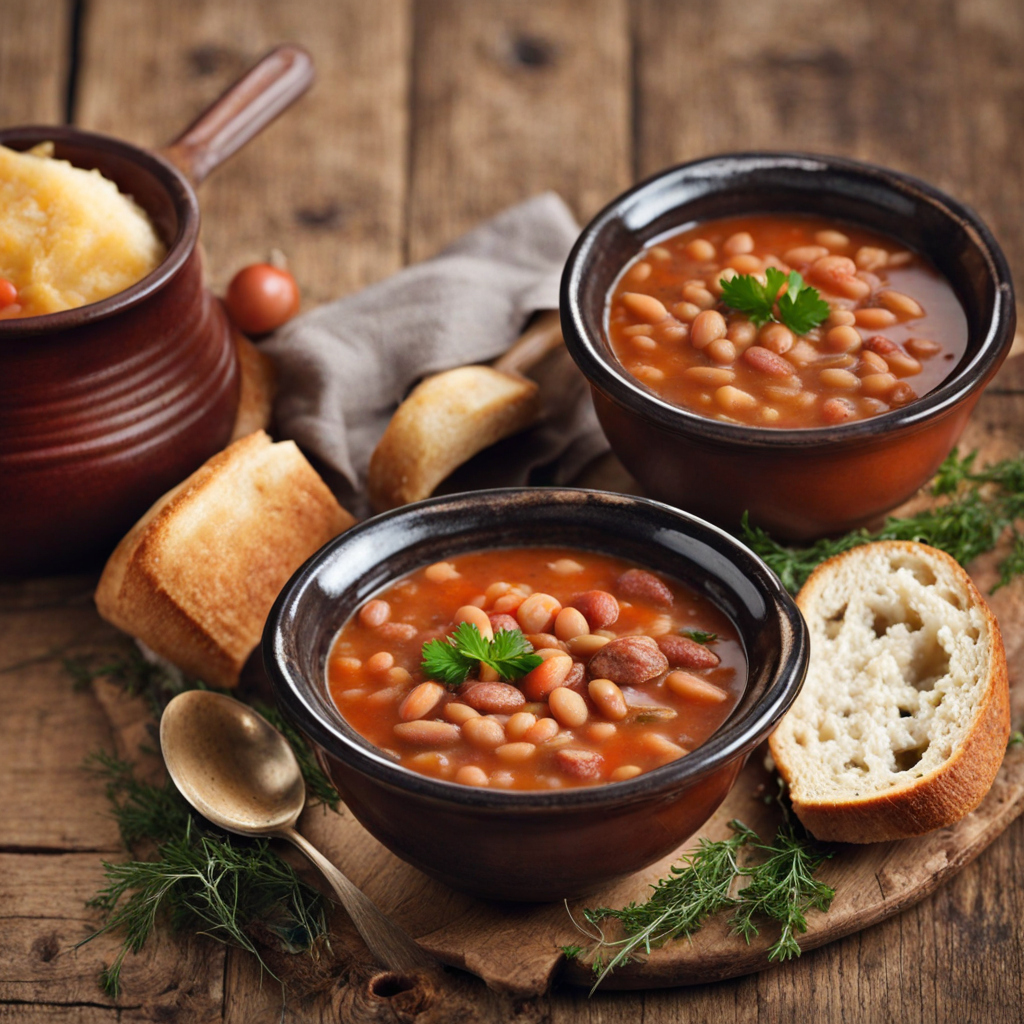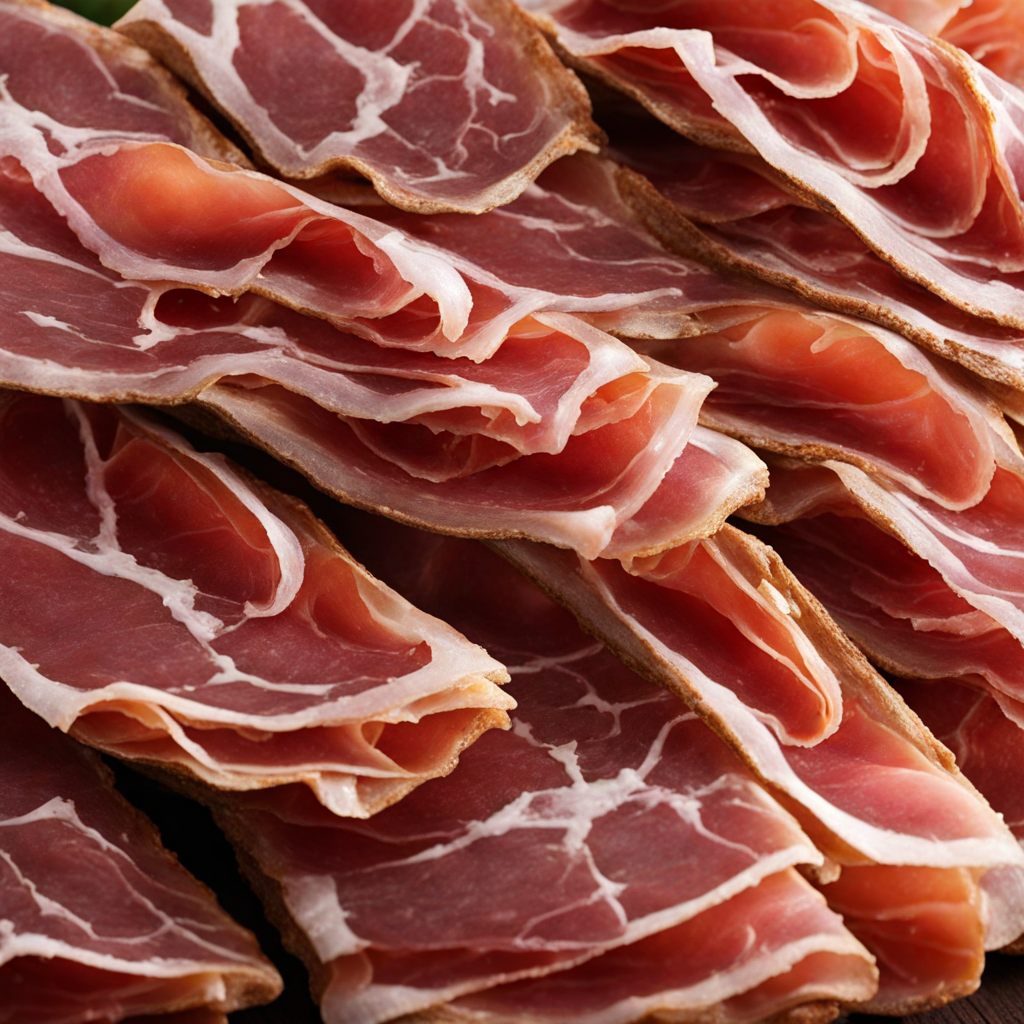Punjene Paprike
Punjene Paprike, or stuffed peppers, is a beloved dish in Serbian cuisine that showcases the rich flavors and hearty ingredients characteristic of the region. This delightful meal typically features bell peppers, which are hollowed out and generously filled with a savory mixture of ground meat, usually a combination of pork and beef, and rice. The filling is often seasoned with a medley of spices such as paprika, black pepper, and garlic, which impart a warm and aromatic profile to each bite. The peppers are then baked until tender, allowing the flavors to meld beautifully, creating a dish that is both comforting and satisfying. One of the most appealing aspects of Punjene Paprike is its versatility. While the traditional stuffing often includes meat and rice, variations abound—vegetarian versions can be made with grains like quinoa or bulgur, mixed with mushrooms, lentils, and an array of vegetables, delivering a similarly hearty experience. The peppers are usually cooked in a rich tomato sauce, which not only enhances the flavor but also adds a delightful tanginess that complements the sweetness of the peppers. As they simmer, the peppers absorb the sauce, making every bite a burst of flavor that is both comforting and hearty. Served hot, Punjene Paprike is often accompanied by a dollop of sour cream, which adds a creamy, tangy contrast to the dish. It's common to enjoy it with crusty bread or a side of mashed potatoes, making it a complete meal that warms both the body and the soul. This dish is not just a staple in Serbian households but also a cherished symbol of family gatherings and celebrations, making it a perfect introduction to the flavors of Serbia and a delightful discovery for any food enthusiast seeking new culinary experiences.
How It Became This Dish
The History of Пуњене паприке (Stuffed Peppers) in Serbian Cuisine #### Origins Pуњене паприке, or stuffed peppers, is a beloved dish in Serbian cuisine, deeply rooted in the agricultural traditions of the Balkans. The history of this dish dates back centuries, influenced by the region's diverse cultural exchanges and agricultural practices. While the exact origins of stuffed peppers are difficult to pinpoint, they are generally believed to have emerged from the Ottoman period, which significantly influenced Serbian culinary traditions. Peppers, particularly the sweet bell variety, were introduced to Europe from the Americas in the late 15th century. They quickly became popular in various cuisines, including those in the Balkan region. The use of peppers as a vessel for stuffing reflects a broader culinary practice seen in many cultures, where various vegetables are hollowed out and filled with a mixture of meat, grains, and spices. In Serbia, the practice of stuffing peppers became a way to utilize available ingredients while creating a hearty and flavorful dish. #### Cultural Significance In Serbia, stuffed peppers are not just a dish; they are a cultural symbol of hospitality and family gatherings. The preparation of пуњене паприке is often a communal activity, bringing families together to share recipes, stories, and laughter. This dish is commonly served at festive occasions, family celebrations, and Sunday meals, reinforcing its status as a comfort food that evokes feelings of home and tradition. The dish also reflects the agricultural heritage of Serbia, where growing peppers is a common practice. The summer months bring a bountiful harvest of peppers, making them an accessible ingredient for many households. As a result, stuffed peppers have become a seasonal favorite, often prepared in large batches to be enjoyed throughout the week. Moreover, stuffed peppers are a representation of the Serbian spirit of adaptability. The filling can vary widely based on regional ingredients and personal preferences. Traditionally, the stuffing consists of ground meat (often pork or beef), rice, onions, and a blend of spices, but variations abound. Some families incorporate local herbs or regional specialties, while vegetarian versions may use lentils, mushrooms, or grains. This flexibility allows the dish to cater to diverse tastes while maintaining its core identity. #### Development Over Time Throughout the 20th century, the evolution of stuffed peppers in Serbia mirrored broader social and economic changes. Post-World War II, with the establishment of socialist Yugoslavia, the accessibility of ingredients shifted. The government encouraged agriculture, and many families began cultivating their own produce, including peppers. This led to a renewed emphasis on traditional recipes and home-cooked meals, as families sought to reconnect with their cultural roots. During this time, stuffed peppers became a staple in school cafeterias and public institutions, further solidifying their place in the national consciousness. As the country underwent industrialization, the convenience of pre-packaged foods also began to influence cooking practices. However, many Serbian families stayed loyal to traditional methods, often passing down recipes from generation to generation. The breakup of Yugoslavia in the 1990s brought with it a wave of nostalgia for traditional foods. In the face of economic hardship and political upheaval, many individuals turned to their culinary heritage as a source of comfort. Stuffed peppers, with their rich history and deep ties to family and community, became emblematic of a longing for stability and connection. In contemporary Serbia, stuffed peppers maintain their prominent role in both everyday life and special occasions. They are often featured in restaurants, where chefs may put a modern twist on the classic recipe, incorporating gourmet ingredients or unique flavors while respecting traditional methods. Additionally, they have found a place in the burgeoning food tourism sector, attracting visitors eager to explore authentic Serbian cuisine. Moreover, the rise of social media has allowed for a resurgence in interest around traditional dishes like пуњене паприке. Home cooks and food enthusiasts share their interpretations of the dish, creating an online community that celebrates Serbian culinary heritage. This digital presence has helped to preserve the cultural significance of stuffed peppers while allowing for creative adaptations that keep the dish relevant in a modern context. #### Conclusion Pуњене паприке represent more than just a delicious meal; they embody the rich tapestry of Serbian culture and history. From their agricultural roots to their role in family gatherings, these stuffed peppers tell a story of resilience, adaptability, and community. As Serbia continues to navigate the complexities of modern life, the enduring popularity of stuffed peppers serves as a reminder of the importance of tradition, connection, and the simple joys of sharing a meal with loved ones. Ultimately, the history of пуњене паприке is a testament to the power of food as a cultural artifact, capable of transcending generations and bringing people together. Whether enjoyed in a bustling restaurant, at a family dinner table, or made with love in a home kitchen, stuffed peppers will always hold a special place in the hearts of Serbians and food lovers alike.
You may like
Discover local flavors from Serbia







